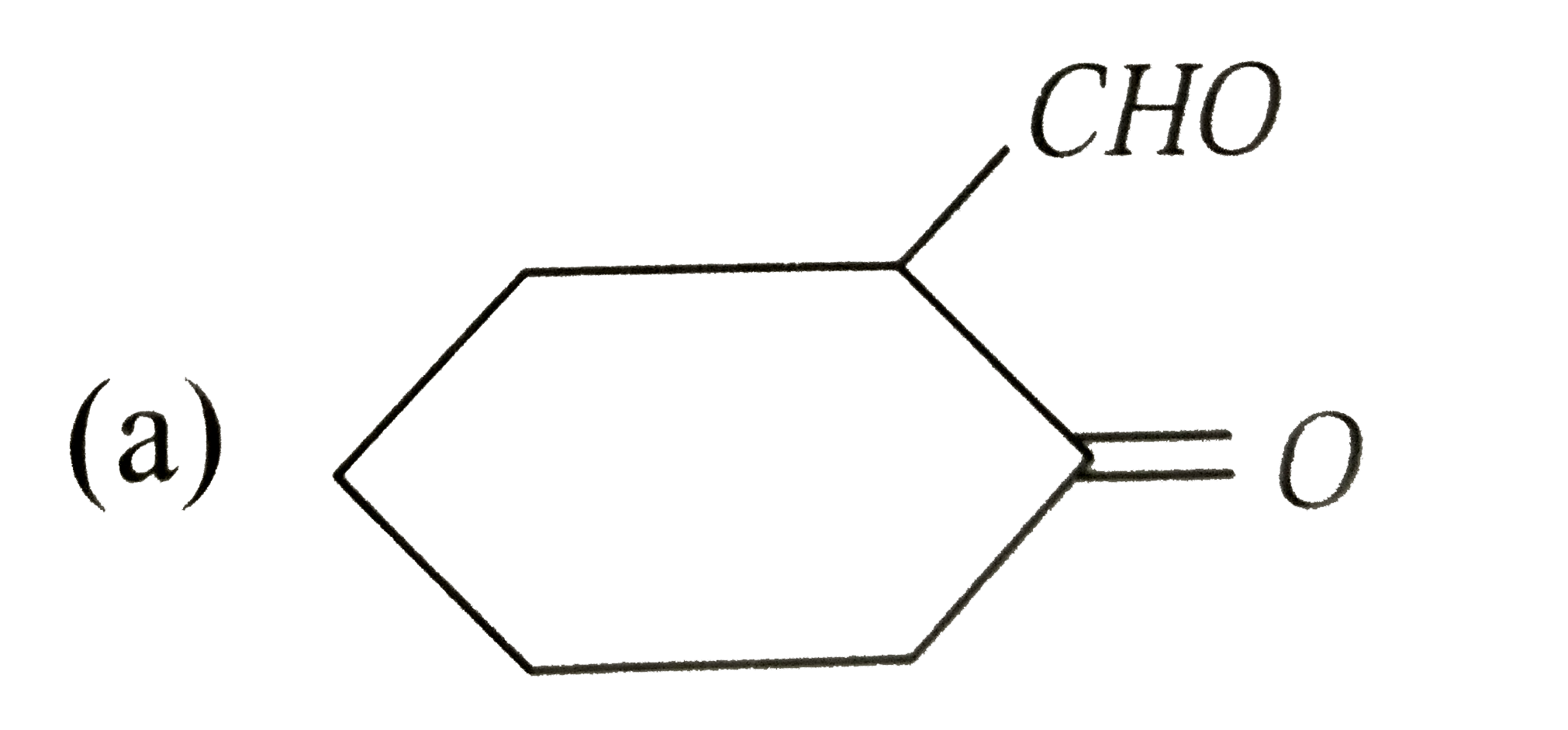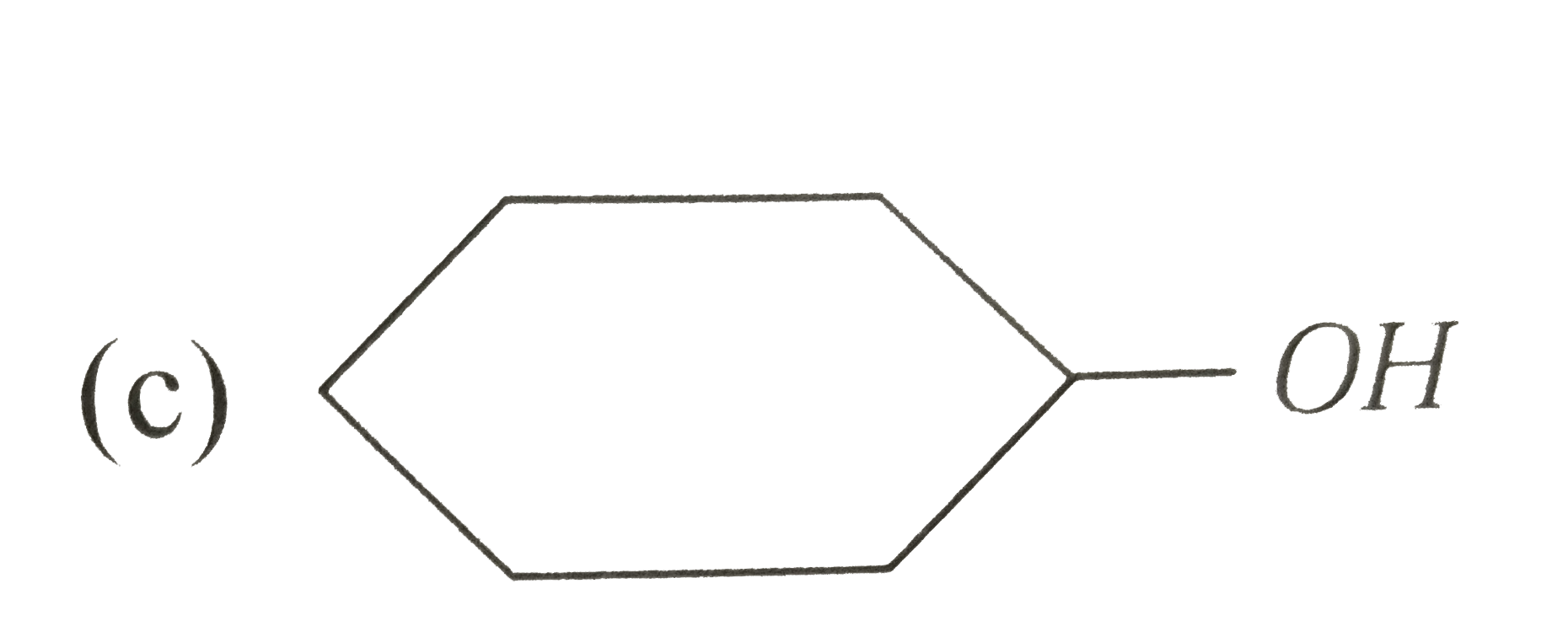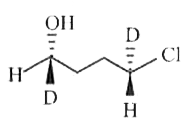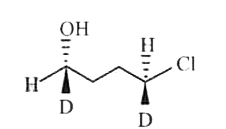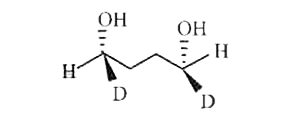Explore topic-wise InterviewSolutions in .
This section includes InterviewSolutions, each offering curated multiple-choice questions to sharpen your knowledge and support exam preparation. Choose a topic below to get started.
| 15751. |
Which of the following ligands would act as flexidentate ligand and ambidentate ligand? |
|
Answer» `SO_(3)^(2-)` 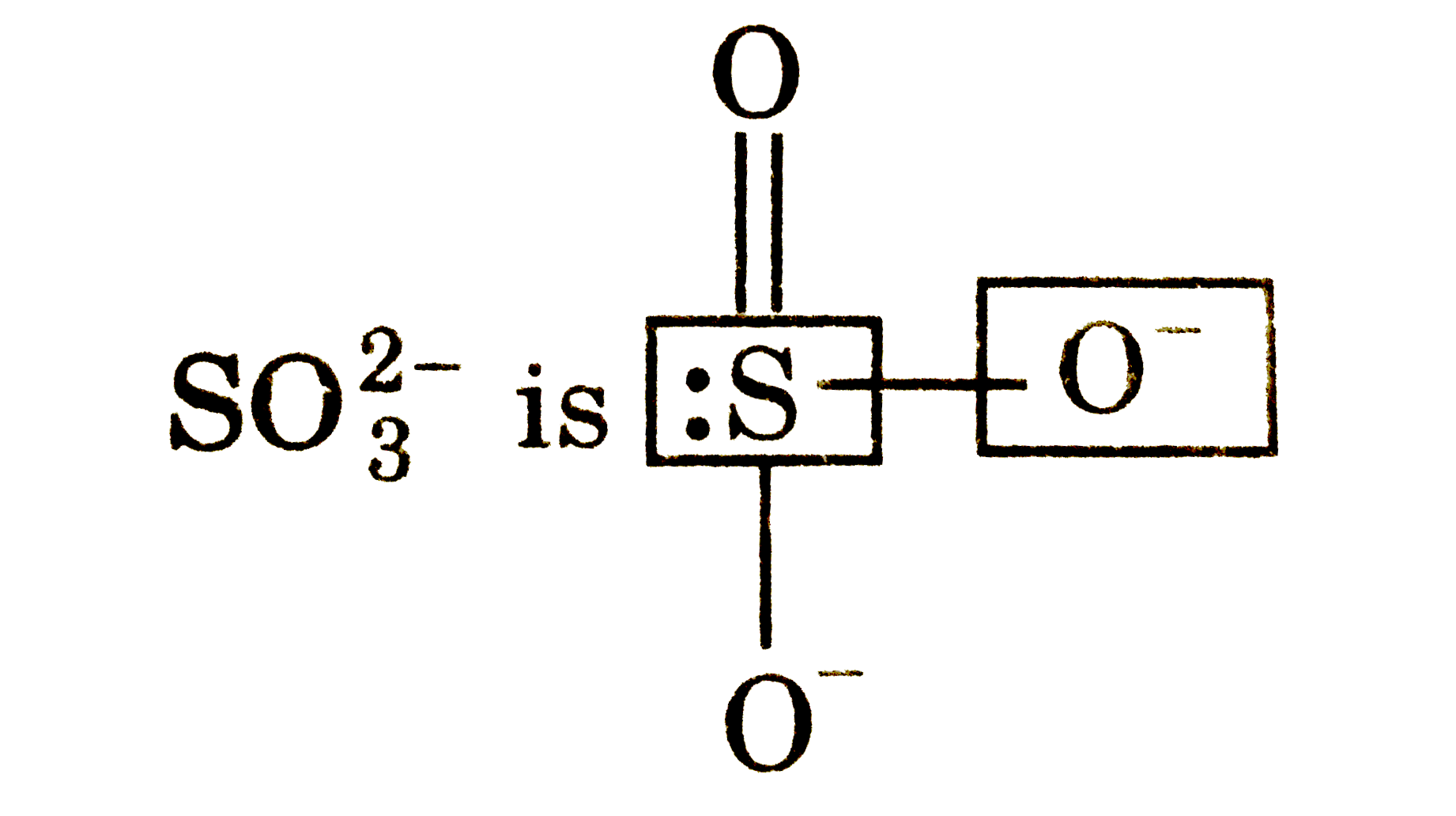 If it acts as AMBIDENT ligand then S and O dimer SITES and if it acts as bidentate then both O can bind at one time. 
|
|
| 15752. |
Which of the following paramagnetic in nature |
|
Answer» CARBONIUM ION |
|
| 15753. |
When H_(2)S reacts with F_(2) the compound formed is |
| Answer» Solution :`H_(2)S+4F_(2) to 2HF +SF_(6)` | |
| 15754. |
Which of the following statements are not correct? (i) F^(-) ion concentration above 2 ppm causes brown mottling in teeth. (ii) Excessive F^(-) (over 10 ppm) causes harmful effect to bones and teeth. (iii) Excessive lead in drinking water causes diseasemethemoglobinemia(iv) Deficiency of sulphate in drinking water causeslaxative effect |
|
Answer» (II) and (iv) |
|
| 15755. |
Which of the following is weakly deactivating atom /group in electrophilic substitution reaction of benzene ? |
| Answer» Answer :D | |
| 15756. |
Which of the following contain transition metal ? |
|
Answer» Vitamin B -12 |
|
| 15757. |
What is relation between G and K? |
|
Answer» CHAIN isomer |
|
| 15758. |
Which of the following will give characteristic colour with FeCl_(3) |
|
Answer»
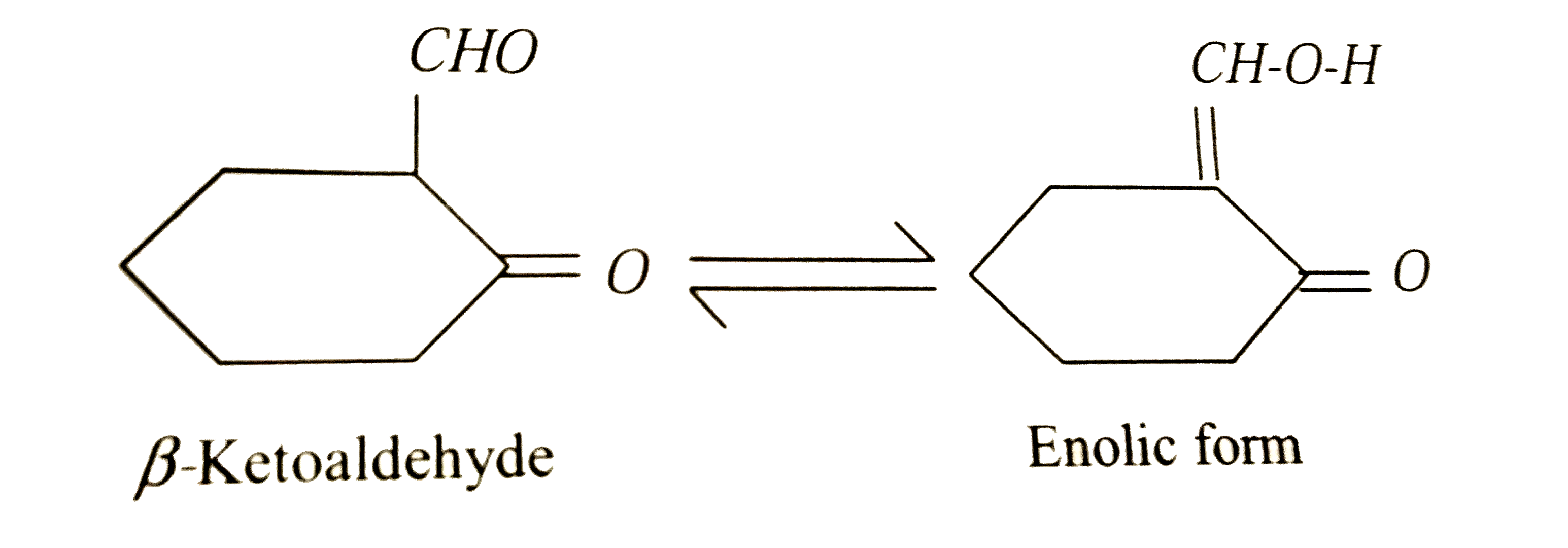 THEREFORE, `beta`-Ketoaldehyde and PHENOL gives characteristic colour with `FeCl_(3)`. |
|
| 15759. |
Which of the following is an example of secondary batteries ? |
|
Answer» MERCURY BUTTON cell |
|
| 15760. |
Why are aryl halides less reactivetowards nucleophilic substitution reactions than alkyl halides? How can we enhance the reactivity of aryl halides? |
|
Answer» Solution :Aryl halides are less reactive towards nucleophilic substitution reaction due to the following reasons () In haloarenes the lone pair of electron on HALOGEN are in resonance with benzene ring So, C-Clbond acquires partial DOUBLE bond character which strengthen C-Cl bond Therefore, they are less reactive towords nucleophilic substitution reaction.  (i) In haloarenes, the carbon atom attached to halogen is `sp^(2)` hybridised. The `sp^(2)` hybridised carbon is more electronegative than `sp^(3)` hybridised carbon. This `sp^(2)`-hybridised carbon in haloarenes can hold the electron pair of C-X bond more tightly and make this C-CI bond shorter than C-Cl bond of haloalkanes Since, it is difficult to break a shorter bond than a longer bond, therefore, haloarenes are less reactive than haloarenes In haloarenes, the phenyl cation will not be stabilised by resonance therefore `S_(N)1` mechanism ruled out (iv) Because of the repulsion between the nucleaphile and electron rich arenes, aryl halides are less reactive than alkyl halides The reactivity of aryl halides can be increased by the presence of an electron withdrawing group `(-(NO_(2))` at ortho and para positions. However, no effect on reactivity of haloarenes is observed by the presence of electron withdrawing group at meta-position. Mechanism of the reaction is as depicted with `""^(-)OH` ion. 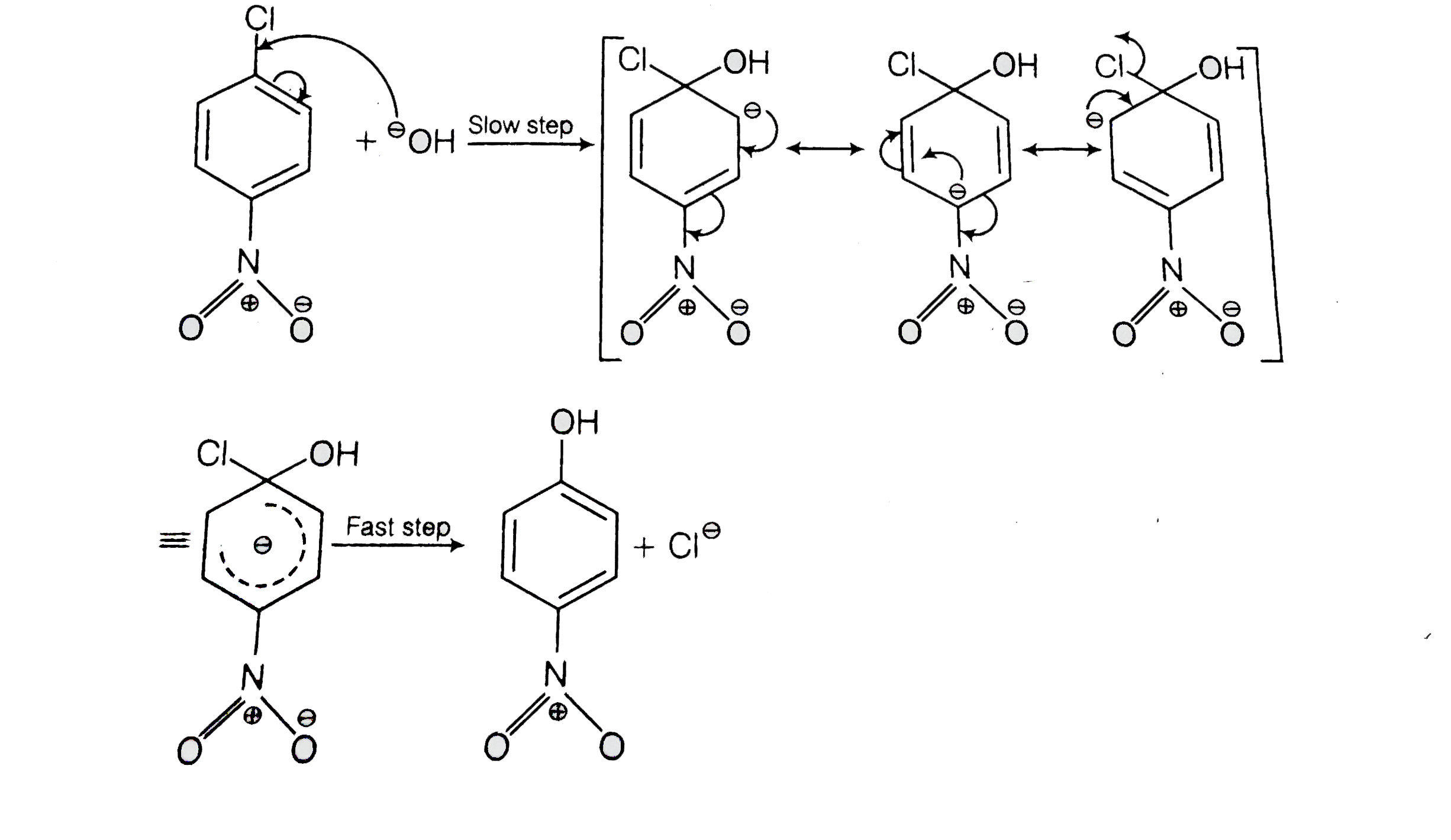 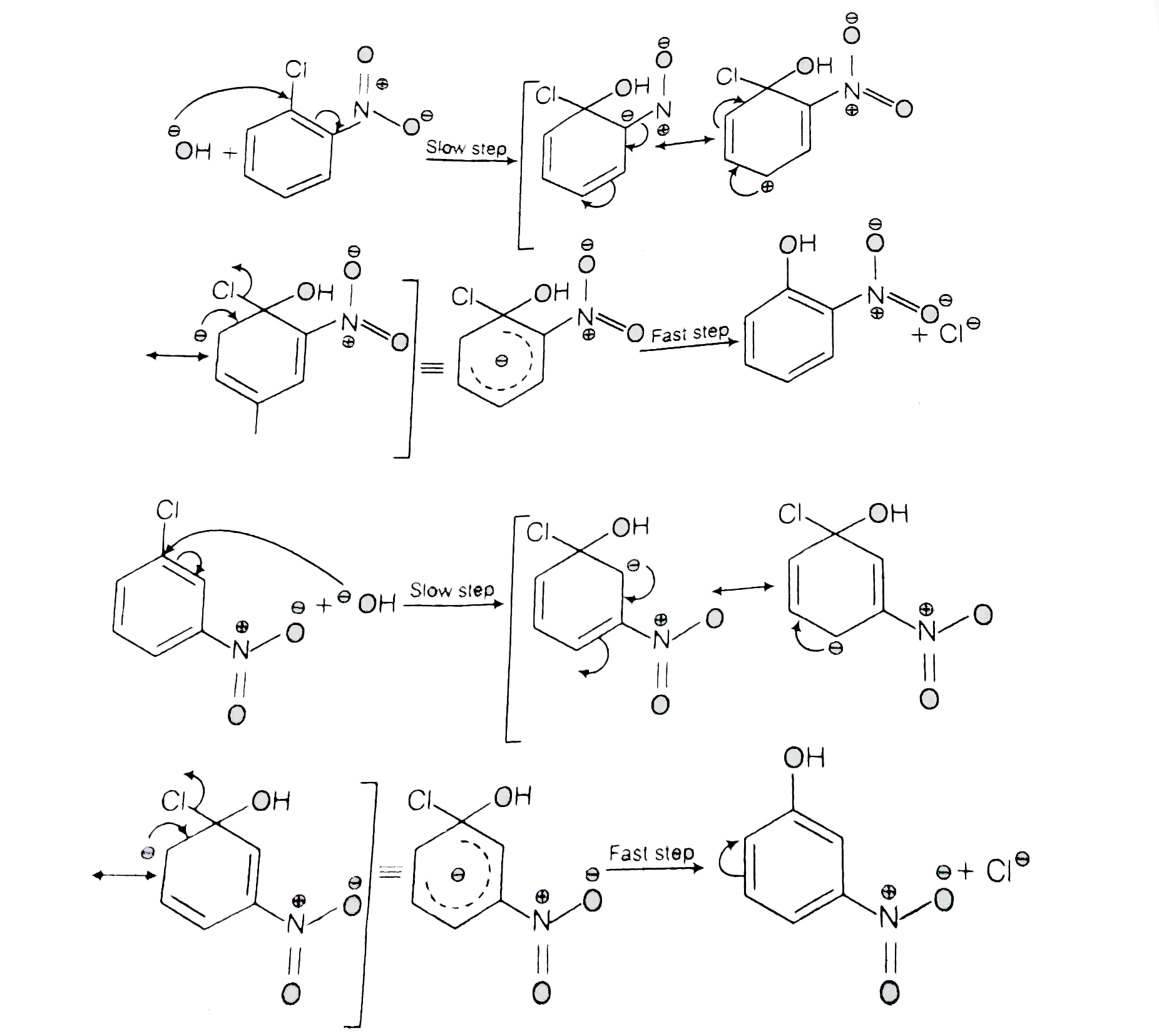 From the above resonance, it is very CLEAR that electron DENSITY is rich at orto and para positions. So, presence of EWG will fascilitate nucleophilic at ortho and para positions not on meta position. |
|
| 15761. |
X' is substance which combines chemically with impurities associated with the ore to form casily fusible mass'Y! Her X and Yare |
| Answer» Answer :A | |
| 15762. |
Which of the following are correct according to Boyle's law ? |
|
Answer» `((del P)/(del V))_(T)=(K)/(V^(2))` `therefore ((dV)/(dP))_(T)=-(K)/(P^(2))` Also, `P=(K)/(V)` `((dP)/(dV))_(T)=-(K)/(V^(2))` HENCE, (A) and (C ) are the correct answer. |
|
| 15763. |
Which of the following lattices has the highest packing efficiency (i) simple cubic (ii) bodycentred cubic and (iii) hexagonal close-packed lattice ? |
|
Answer» Solution :(i) Simple CUBIC : 52% PACKING efficiency (II) Body-centred cubic : 68% packing efficiency (iii) Hexagonal close packing : 74% packing efficiency. Hence, Hexagonal close-packed structure is maximum efficient. |
|
| 15764. |
Which of the following order is wrong |
|
Answer» `NH_(3)ltPH_(3)ltAsH_(3)` - acidic nature |
|
| 15765. |
What is Vinegar? How will you get glacial acetic acid? |
|
Answer» Solution :(i) Vinegar is 6 to 8% solution of acetic ACID in water. (ii) Pure acetic acid is CALLED glacial acetic acid. Because it forms ice LIKE crystal when cooled. When aqueous acetic acid is cooled at 289.5 K, acetic acid SOLIDIFIES and forms ice like crystals, where as water remains in liquid state and removed by filtration. This process is repeated to obtain glacial acetic acid. |
|
| 15766. |
Whatis themaximumnumberof carbonatomsin theexpectedproductsof theWurtz reaction ? CH_(3)-CH_(2) Brunderset( "products")underset("Na+dryether"darr)andCH_(3)-underset(CH_(3))underset(|)CH-CH_(2)Br |
|
Answer» 8 |
|
| 15767. |
When 10^(-6) mole of a monobasic strong acid is dissolved in one litre of solvent, the pH of the solution is |
|
Answer» 6 |
|
| 15768. |
Which of the following parameters are correct for triclinic lattice ? |
|
Answer» `alpha = BETA = gamma = 90^(@)` and `a = b = C ` |
|
| 15769. |
Give one test to distinguish between acetaldehyde and acetone. |
|
Answer» Fehling.s SOLUTION |
|
| 15770. |
Which of the following solutions will exhibit highest boiling point ? |
|
Answer» `0.01 M Na_(2)SO_(4(aq))` For `0.01 M Na_(2)SO_(4), Delta T_(b)=3xx0.01xx K_(b)` `[Na_(2)SO_(4)to 2Na^(+)+SO_(4)^(2-), i=3]` For `0.01M KNO_(3), Delta T_(b)=2xx0.01xx K_(b)` `[KNO_(3)rarr K^(+)+NO_(3)^(-), i=2]` For 0.015 M urea, `Delta T_(b)=0.015 xx K_(b)`[Urea is a NON electrolyte] For 0.015 M glucose,`Delta T_(b)=0.015xxK_(b)` [Glucose is a non - electrolyte]. |
|
| 15771. |
Whichstatement (s) are correct ? (1) A 3s sub - shell hasa maximum of8 electrons. (2)An elementwith configurationof 1s^(2) 2s^(2)3p^(6)3s^(2) would be in the same group as beryllium. (3) The general electronic configuration of the groupcontaining N_(2) is ns^(2) np^(2). (4) A strontium atom has a filled outer shell if it loses tow electrons. |
|
Answer» 1,2 and 3 (2) Correct : It is the electron configurationof MG . (3) Incorrect : Thecorrect VALENCESHELL configuration of this group is `NS^(2)np^(3)` . (4) Correct: It is in secondgroupwith onlytwovalenceelectrons. |
|
| 15772. |
Which of the following contains only three pairs of electrons ? |
|
Answer» Carbocation |
|
| 15773. |
What are the limitations of Freundich adsorption isotherm? |
|
Answer» Solution :(i) The FREUNDLICH adsorption isotherm is purely empirical and VALID over a limited pressure RANGE. ii. The value of constant .k. and .n. also found VARY with temperature. No theoritical explanation were given. |
|
| 15774. |
The unit cell with crystallographic dimensions : a =b cancel(=)c, alpha =beta = gamma = 90^(@) is : |
|
Answer» CUBIC |
|
| 15775. |
Which one of the following will show the highest pH value? |
|
Answer» m-nitrophenol |
|
| 15776. |
Two flasks A and B of equal capacity of volume contain SO_3 and CO gas respectively under similar conditions of temperature and pressure. Then, which of the following statement is true? |
|
Answer» A has TWICE the number of MOLES as that of B |
|
| 15777. |
Which of the following statements is/are true ? |
|
Answer» `Cu^(2+)` salts form soluble COMPLEX with excess KCN |
|
| 15778. |
Which of the following statement is/are incorrect ? |
|
Answer» the end nuclide formed in thorium (4n) series is `""_(81) BI^(200)` |
|
| 15779. |
Which of the following factors affect the colligative properties of solution ? |
|
Answer» Nature of SOLUTE |
|
| 15780. |
The stability of +1 oxidation state increases in the sequence……………….. |
|
Answer» AlltGaltInltTI |
|
| 15781. |
What is the product X in the following reaction ? |
|
Answer»
 is formed by `S_(N)2` MECHANISM INVOLVING replacement of `Br^(-)` by `OH^(-)`. is formed by `S_(N)2` MECHANISM INVOLVING replacement of `Br^(-)` by `OH^(-)`.
|
|
| 15782. |
Which one of the following elements is most abundant in earth crust ? |
|
Answer» Aluminium |
|
| 15783. |
Which of the following reactions does not take place during rusting? |
|
Answer» `H_2CO_3 HARR 2H^(+) + CO_3^(2-)` |
|
| 15784. |
Which is true for a detergent molecule? |
|
Answer» It has a non-polar ORGANIC part and a polar group |
|
| 15786. |
What is the percentage of sulphur used in vulcanization of rubber |
|
Answer» 0.05 |
|
| 15787. |
Which of the following reagent may be used to distinguish between phenol and benzoic acid ? |
|
Answer» Aqueous `NAOH` |
|
| 15788. |
Which of the following is a trisaccharide ? |
|
Answer» Stachyrose |
|
| 15789. |
What is the significance of Henry'g Law constant K_(H) ? |
| Answer» SOLUTION :HIGHER the VALUE of Henry's law constant, `K_(H)`, lower is the solubility of gas in the liquid. | |
| 15790. |
Which of the following is a criteria to calssify drugs ? |
|
Answer» CHEMICAL stucture |
|
| 15791. |
Which of the following metal nitrates give oxides on heating ? |
|
Answer» Solution : `2LiNO_3overset(DELTA)rarrLi_2O+2NO_2+1/2O_(2),2NaNO_(3)overset(Delta)rarr2NaNO_2+O_2` `Ca(NO_3)_(2)overset(Delta)rarrCaO+2NO_(2)+1/2O_(2),Mg(NO_3)_2overset(Delta)rarrMgO+2NO_(2)1/2O_2` |
|
| 15792. |
Which nitrogen trihalides is least basic |
|
Answer» `NF_(3)`  it least basic because of the high electronegativity of 3F atoms. The LONE pair present on nitrogen ATOM is not easily AVAILABLE for donation. |
|
| 15793. |
Which contains larger proportion of glycrides of unsaturated fatty acid : |
| Answer» ANSWER :A | |
| 15794. |
When isobutane is treatedwith bromine at 127^(@) C, the product formedis |
|
Answer» a mixtureof isobutyl bromide and teri - butylbromide . |
|
| 15795. |
Write the IUPAC name of the following compound : CH_(2) = CHCH_(2)Br |
| Answer» SOLUTION :`underset("3-Bromoprop -1-ene") (overset(1)CH_(2) = overset(2)CHoverset(3)CH_(2)Br) ` | |
| 15796. |
The resistance of 0.15 M solution of an electrolyte is 50Omega. The specific conductance of the solution is 2.4 Sm^(-1). The resistance of 0.5 N solution of the same electrolyte measured using the same conductivity cell is 480Omega. Find the equivalent conductivity of 0.5 N solution of the electrolyte. |
|
Answer» Solution :Given that `R_(1)=50 Omega""R_(2)=480Omega` `kappa_(1)=2.4Sm^(-1) ""kappa_(2)=?` `N_(1)=0.15N""N_(2)=0.5N` `wedge=(kappa_(2)(SM^(_1)) times 10^(-3)("gram EQUIVALENT")^(-1)m^(3))/(N)` `""=(0.25 times 10^(-3)S("gram equivalent")^(-1)m^(2))/(0.5)` `wedge=5 times 10^(-4)Sm^(2)" gram equivalent"^(-1)` We know that `KAPPA="Cell constant"/R` `therefore kappa_(2)/kappa_(1)=R_(1)/R_(2)` `kappa_(2)=kappa_(1) times R_(1)/R_(2)` `""=2.4Sm^(-1) times (50 Omega)/(480 Omega)` `""=0.25Sm^(-1)` |
|
| 15797. |
Two liquids A and B mix to form an ideal binary liquid solution On adding solid solute C to the solution, A starts polymerising into a hexamer soluble solid 'A'_(6) Following zero order kinetics with a rate constant =10^(-1)"moles"//min if initialy 10 moles of A and 20 moles of B were taken to form liquid solution and 5 moles of C were added then answer the following questions based on above information and data given below:[Data: vapour pressure of pure A=100 torr, vapour pressure of pure B=90 torr] The vapour pressure of the solution 1 hr after solid C is added will be given by : |
| Answer» Answer :A | |
| 15798. |
Tris (ethylenediamine) cobalt (III) cation, [Co(en)_3]^(3+), can have |
|
Answer» (a) three stereoisomers, all chiral and optically ACTIVE  Optical isomers (d and c) of `[Co(en)_3]^(3+)` Optical isomers have mirror images that cannot be SUPERIMPOSED on one another. These are called as enantiomers. The molecules or IONS that cannot be superimposed are called chiral. |
|
| 15799. |
Two liquids A and B mix to form an ideal binary liquid solution On adding solid solute C to the solution, A starts polymerising into a hexamer soluble solid 'A'_(6) Following zero order kinetics with a rate constant =10^(-1)"moles"//min if initialy 10 moles of A and 20 moles of B were taken to form liquid solution and 5 moles of C were added then answer the following questions based on above information and data given below:[Data: vapour pressure of pure A=100 torr, vapour pressure of pure B=90 torr] Which of the following statements is incorrect regarding the above process? |
|
Answer» The vapour pressure will keep on decreasing initially. |
|
| 15800. |
Which of the following is not a property of aniline |
|
Answer» It is BASIC in nature |
|
